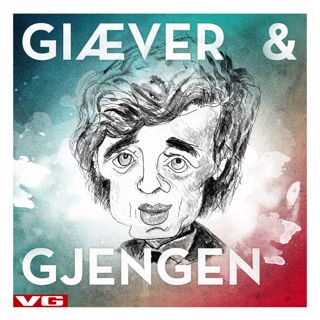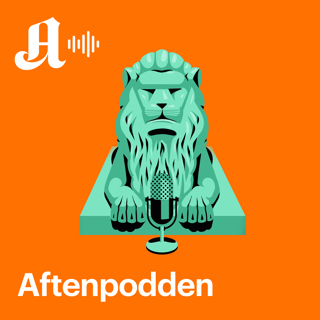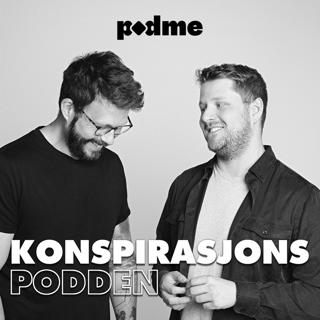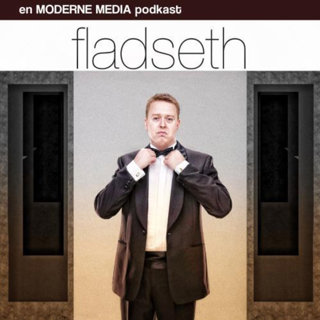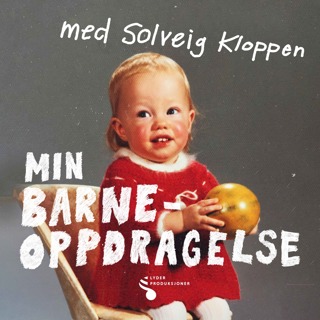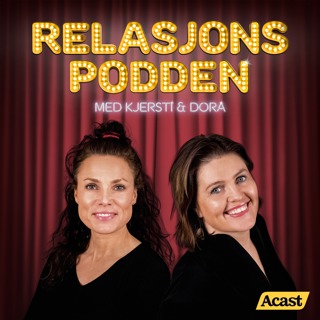
John Prados, “Storm Over Leyte: The Philippine Invasion and the Destruction of the Japanese Navy” (NAL, 2016)
Narratives of the Pacific War frequently examine the 1944 Battle of Leyte Gulf from the operational perspective, focusing on the desperate actions of the US Seventh Fleets escort carriers, Task Unit 77.4.3 (“Taffy 3”) against the much larger Japanese Center Force, commanded by Vice Admiral Takeo Kurita. The ensuing drama, including the famous call for help and rebuke of US Third Fleet commander, Admiral William F. Halsey, Jr., has become legend. In his latest book, Storm Over Leyte: The Philippine Invasion and the Destruction of the Japanese Navy (NAL, 2016), seasoned historian John Prados places Leyte Gulf as the denouement of a larger campaign for control of the Central Pacific Ocean, one which was the swan song of Japanese naval power. Incorporating the naval intelligence of both sides, he restores agency to the Imperial Japanese Navy as the unwitting architect of its own destruction. Drawing upon a wide range of sources, including many hitherto unseen Japanese primary documents, memoirs, and interviews, Prados unveils one of the most comprehensive comparative treatments of this controversial campaign. Learn more about your ad choices. Visit megaphone.fm/adchoices Support our show by becoming a premium member! https://newbooksnetwork.supportingcast.fm/military-history
13 Okt 201654min

Elizabeth Reich, “Militant Visions: Black Soldiers, Internationalism, and the Transformation of American Cinema” (Rutgers UP, 2016)
Elizabeth Reich is an assistant professor of film studies at Connecticut College in New London. Militant Visions: Black Soldiers, Internationalism, and the Transformation of American Cinema (Rutgers University Press, 2016) examines how, from the 1940s to the 1970s, the cinematic figure of the black soldier helped change the ways American moviegoers saw black men, for the first time presenting African Americans as vital and integrated members of the nation. In the process, Elizabeth Reich reveals how the image of the proud and powerful African American serviceman was crafted by an unexpected alliance of government propagandists, civil rights activists, and black filmmakers. Contextualizing the figure in a genealogy of black radicalism and internationalism, Reich shows the evolving images of black soldiers to be inherently transnational ones, shaped by the displacements of Diaspora, Third World revolutionary philosophy, and a legacy of black artistry and performance. Offering a nuanced reading of a figure that was simultaneously conservative and radical, Reich considers how the cinematic black soldier lent a human face to ongoing debates about racial integration, black internationalism, and American militarism. Militant Visions thus not only presents a new history of how American cinema represented race, but also demonstrates how film images helped to make history, shaping the progress of the civil rights movement itself. In addition to this work, previously in 2015 Reich co-edited a special issue of Film Criticism, titled “New Approaches to Cinematic Identification,” which brings together works on one of Reich’s other primary interests: identification and film spectatorship. Reich’s own articles appear in Screen, African American Review, Film Criticism and Women and Performance, and she has a chapter forthcoming in Black Cinema Aesthetics, edited by Michael Gillespi and Akil Huston. She also serves on the editorial boards of Criticism and Film Criticism. Reich is also currently at work on two new projects: co-editing a book collection on Afrofuturism, Justice In Time: Critical Afrofuturism and Black Freedom Struggles, and writing another monograph on global cinema, temporality and reparations, tentatively titled Reparative Time. In addition to her film studies scholarship, Reich is also a noted documentary director. Her feature-length documentaries include “Milton and Charlotte: A Baliwood Love Story” and “very Queer kids.” James Stancil is an independent scholar, freelance journalist, and the President and CEO of Intellect U Well, Inc. a Houston-area non-profit dedicated to increasing the joy of reading and media literacy in young people. Learn more about your ad choices. Visit megaphone.fm/adchoices Support our show by becoming a premium member! https://newbooksnetwork.supportingcast.fm/military-history
10 Okt 201634min

James Carl Nelson, “I Will Hold: The Story of USMC Legend Clifton B. Cates, From Belleau Wood to Victory in the Great War” (NAL, 2016)
Best remembered as the nineteenth commandant of the U.S. Marine Corps, Clifton B. Cates began his long and distinguished military career as a second lieutenant in World War I. In I Will Hold: The Story of USMC Legend Clifton B. Cates, From Belleau Wood to Victory in the Great War (NAL, 2016), journalist and author James Carl Nelson recounts Cates’ early life and service in the war. Cates was studying to take the Tennessee bar when the United States joined the war in April 1917, an event which led Cates to set aside his studies and answer the call to service. After training in the rapidly-expanding Marine Corps, Cates was sent to France in January 1918, and within a few short months he found himself at the heart of combat at the battle of Belleau Wood. Despite being in the thick fighting, Clifton escaped serious injury, and with his unit he participated in the Soissons offensive later that summer. Nelson’s book offers a look at the war Cates fought against the Germans, one in which he demonstrated his natural leadership skills and won some of the highest honors our nation could bestow. Learn more about your ad choices. Visit megaphone.fm/adchoices Support our show by becoming a premium member! https://newbooksnetwork.supportingcast.fm/military-history
16 Sep 201642min

Akiko Takenaka, “Yasukuni Shrine: History, Memory, and Japan’s Unending Postwar” (U. of Hawaii Press, 2015)
Akiko Takenaka’s new book looks carefully at Yasukuni Shrine as a war memorial, examining its role in waging war, honoring the dead, promoting peace, and building a modern national identity. Yasukuni Shrine: History, Memory, and Japan’s Unending Postwar (University of Hawaii Press, 2015) pays special attention to the significance of memory and spatial practice in shaping Yasukuni as belief, site, and issue. The chapters guide readers from the pre-history of Yasukuni tracing the origin of an important myth that developed around Yasukuni Shrine during the Asia-Pacific War: the idea that dying for the emperor would result in enshrinement at Yasukuni as a god through the very different uses of the space as a venue for popular entertainments and celebrations, the popularization of beliefs associated with the shrine outside of Tokyo and the nationalization of the Yasukuni myth, the practices associated with Yasukuni during total war mobilization during the Asia-Pacific War, the politics and legalities of enshrinement at Yasukuni, and postmemory at Yasukuni today. Its a clear and compelling study of an important issue that will be of interest to many readers. Enjoy! Learn more about your ad choices. Visit megaphone.fm/adchoices Support our show by becoming a premium member! https://newbooksnetwork.supportingcast.fm/military-history
24 Aug 20161h 10min

Richard L. Davis, “From Warhorses to Ploughshares: The Later Tang Reign of Emperor Mingzong” (Hong Kong UP, 2015)
Ruling as he did during the Five Dynasties period of Chinese history, the emperor Mingzong (r. 926-933) has not received the same degree attention from historians as have many of his counterparts. In From Warhorses to Ploughshares: The Later Tang Reign of Emperor Mingzong (Hong Kong University Press, 2015), Richard L. Davis provides readers with the first modern biography of Mingzong. Born Miaojilie, Mingzong grew up among his fellow Shatuo Turks and rose to become a leading commander of the forces of the Tang dynasty. After taking the throne in the aftermath of a military rebellion, he managed relations with other states with success and instituted a series of economic reforms designed to encourage trade. Though the territories of the Tang prospered during this period, peace was cut short by Mingzong’s death, with his dynastic line coming to a violent end less than a decade later. Davis’ book offers a window into a dramatic era in China’s past, one in which Mingzong’s reign stood out for its stability amidst the tumult. Learn more about your ad choices. Visit megaphone.fm/adchoices Support our show by becoming a premium member! https://newbooksnetwork.supportingcast.fm/military-history
17 Aug 20161h

Lauren Faulkner Rossi, “Wehrmacht Priests: Catholicism and the Nazi War of Annihilation” (Harvard UP, 2015)
I teach at a Catholic university and last semester co-taught (with a theologian) a class titled The Holocaust and its Legacies. Once my students became comfortable with me, they began to pepper me with questions about the role of the Catholic church during the Holocaust. Some of these questions–about the church and antisemitism, about the role of the Pope–I was able to answer effectively. But when they started asking me about the behaviors and beliefs of the bishops and priests-the people in the church who interacted with ordinary people on an everyday basis–I was at a loss. Thanks to Lauren Faulkner Rossi’s new book Wehrmacht Priests: Catholicism and the Nazi War of Annihilation (Harvard University Press, 2015), I can now give a much more informed and thoughtful answer to these questions. While Rossi spends some time looking at the macro level, she devotes most of her book to ‘ordinary’ priests who served in the German army. Some of these men were chaplains specifically entrusted with the pastoral care of the men in their units. Many others were priests who served in the army in other roles, who were specifically prohibited from offering such care to their fellow soldiers. Her book offers a nuanced, well-researched and convincing portrait of ordinary people trying to integrate their religious faith and their positions in the church with their service in a nazified army. It’s a compelling story, one that Rossi tells well. I will be recommending it to my students for a long time to come. Learn more about your ad choices. Visit megaphone.fm/adchoices Support our show by becoming a premium member! https://newbooksnetwork.supportingcast.fm/military-history
16 Aug 20161h 4min

Paul M. Cobb, “The Race for Paradise: An Islamic History of the Crusades” (Oxford UP, 2014)
The Crusades loom large in contemporary popular consciousness. However, our public understanding has largely been informed from a western perspective, despite the fact that there is a rich textual tradition recording its history in Muslim sources. Paul M. Cobb, Professor of Near Eastern Languages and Civilizations at the University of Pennsylvania, remedies this problem in The Race for Paradise: An Islamic History of the Crusades (Oxford University Press, 2014) by presenting the fullest and most readable account of the Crusades relying on Islamic sources. Cobb expands the geographical and chronological boundaries of the Crusades by placing traditional conflicts within Muslim accounts of Frankish aggression. In general, medieval Muslims were not overly concerned with Europe and ongoing relationships between Christians and Muslims only really existed in the Mediterranean context. European expansion into Muslim lands throughout the Middle Ages marked a different phase of encounter,but these incursions were not always clearly demarcated by religious boundaries. Cobb illustrates the often competing logic behind political alliances, military aggression and intervention, or discursive justification. The Race for Paradise does a wonderful job of presenting the narrative in a new light and dissolving many of the assumptions about pre-modern conflicts that have been produced by one-sided accounts of the Crusades. In our conversation we discussed the Frankish conquests, the significance of Jerusalem, Mediterranean Muslims communities, Arabic sources, notions of jihad, Frankish rule in the Levant, Saladin and his political heirs, thinking about the Crusades today, and making an audio book. Kristian Petersen is an Assistant Professor in the Department of Religious Studies at the University of Nebraska Omaha. His research and teaching interests include Theory and Methodology in the Study of Religion, Islamic Studies, Chinese Religions, Human Rights, and Media Studies. You can find out more about his work on his website, follow him on Twitter @BabaKristian, or email him at kjpetersen@unomaha.edu. Learn more about your ad choices. Visit megaphone.fm/adchoices Support our show by becoming a premium member! https://newbooksnetwork.supportingcast.fm/military-history
25 Jul 201649min

Mitchell Yockelson, “Forty-Seven Days: How Pershing’s Warriors Came of Age to Defeat the German Army in WWI” (NAL Caliber, 2016)
In Forty-Seven Days: How Pershing’s Warriors Came of Age to Defeat the German Army in World War I (NAL Caliber, 2016), National Archives historian and forensic archivist Mitchell Yockelson reappraises the American Expeditionary Force’s performance under the command of General John J. Pershing. Accordingly, the American forces’ combat experience in the September to November 1918 Meuse-Argonne Campaign is shown to be far more pivotal to Allied victory than allowed for in the standard Anglo-centric literature of the conflict. Even as Pershing’s army acquired its craft in hard fighting against an increasingly implacable and desperate German opponent, the men of the A.E.F. proved to be relentless in their efforts to clear the densely wooded and fortified forest that had resisted French efforts for the previous four years. Yockelson’s account of the campaign is even-handed and well-written, providing the foundation for an interesting conversation about the book and his own approach to writing and interpreting history from a wide range of primary and secondary sources. Learn more about your ad choices. Visit megaphone.fm/adchoices Support our show by becoming a premium member! https://newbooksnetwork.supportingcast.fm/military-history
25 Jul 201658min


